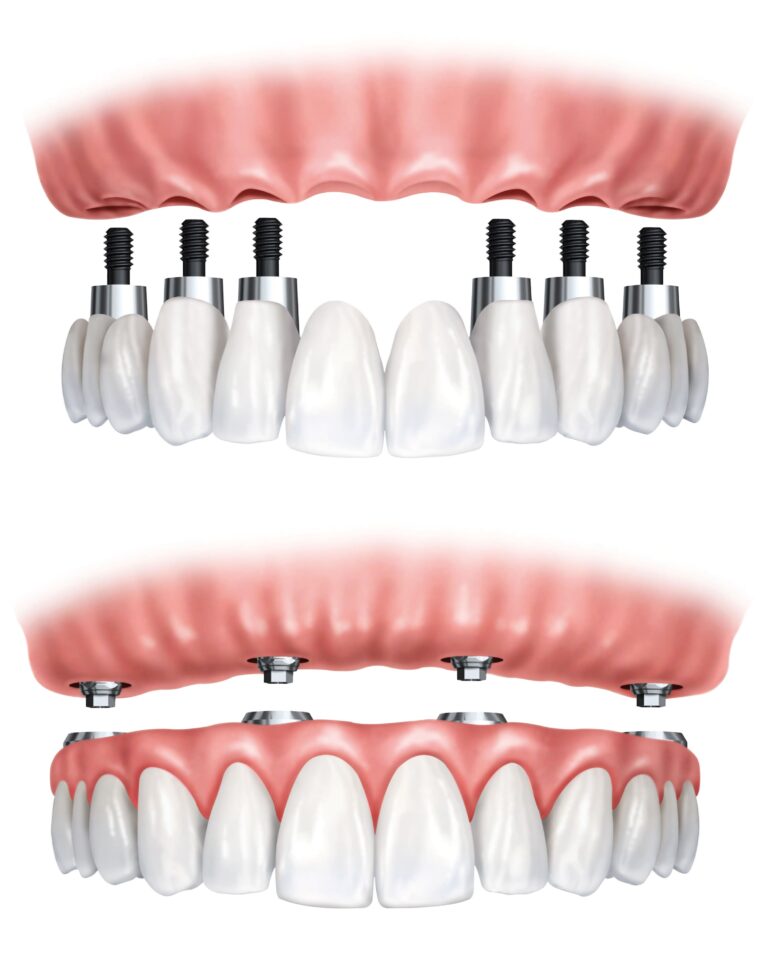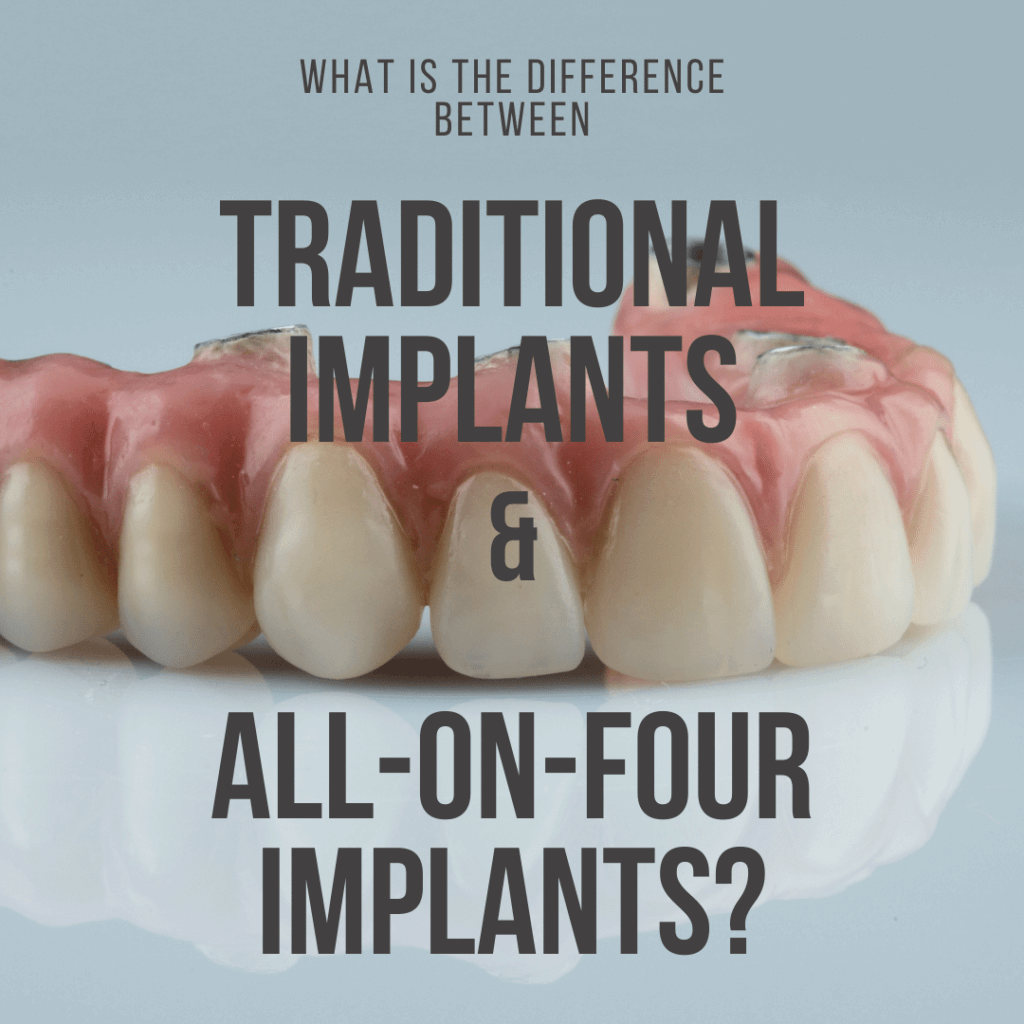Dental implants have become a popular way to replace missing teeth. There are two main types of dental implants: traditional and all-on-four. Traditional implants multiple screws to secure a denture in the jawbone. All-on-four implants use only four screws to secure a denture, and rely on the natural stability of the jawbone to keep them in place. Let’s take a closer look at the differences between traditional and all-on-four implants.

Although both types of implants provide long-lasting methods to replacing missing teeth, they do have a few key differences that set them apart. When considering what type of implant to choose, it is important to be aware of these differences. They include:
Number of Screws Used:
Traditional implants require the placement of multiple screws in the jawbone. To secure a denture, a minimum of six screws per arch are usually needed, however there are also cases where more may be used. To replace an entire mouth of missing teeth, the number of implants will need to be doubled. All-on-four implants, on the other hand, use only four screws per arch to support the placement of a denture.
Placement Technique:
The reason why fewer screws need to be used for all-on-four implants is due to their placement technique. All-on-four implants are placed at an angle in the jawbone, which provides more support and stability than traditional implants.
Reduced Need for Bone Augmentation:
Another benefit of all-on-four implants is that they often do not require bone augmentation. This is because their placement technique helps to avoid areas of the jawbone that are typically weaker. Traditional implants, on the other hand, may require bone augmentation in order to provide adequate support.
Healing Time:
The healing time for all-on-four implants is typically shorter than traditional implants. This is because fewer screws are used, which means there is less trauma to the jawbone. Not only that, but there is also no healing time associated with bone augmentation procedures. In the case that a bone augmentation procedure is performed, this can add a few months of recovery.
Cost:
There are also differences in terms of cost. Generally speaking, all-on-four implants tend to be more affordable than traditional implants. This is because fewer screws are used, and there is no need for bone augmentation procedures.
When it comes to deciding between traditional and all-on-four implants, it is important to speak with your dentist to see what option is right for you. Depending on your individual needs, one type of implant may be better suited than the other.
In Conclusion
In this blog, we discussed the differences between traditional and all-on-four implants. These included: number of screws used, placement technique, reduced need for bone augmentation, healing time, and cost. All-on-four implants have become a popular choice in recent years due to their many benefits. However, traditional implants are still an option for those who may be better suited for them. If you are considering dental implants, be sure to speak with your dentist about which type of implant is right for you.




